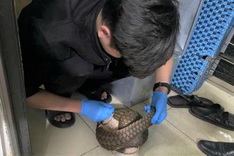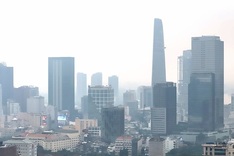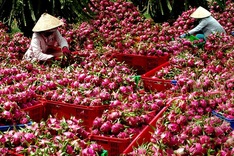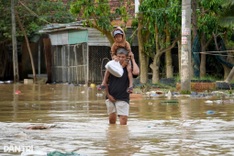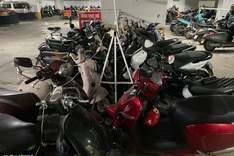
Scientists have recorded 527 species of flora and fauna in the Hai Van-Son Cha coastal area of Hue City.
Scientists have recorded 527 species of flora and fauna, including 15 rare and 87 economically valuable species, in the Hai Van-Son Cha coastal area of Hue City, a region once severely impacted by the Formosa environmental disaster.
A recent study conducted by scientists from the Vietnam Academy of Science and Technology has provided vital data on biodiversity and biological resources in the rocky intertidal ecosystem of Hai Van-Son Cha, an area previously affected by the Formosa marine pollution incident.
The study identified 527 plant and animal species in the area, including 15 rare species and 87 of economic importance.
Researchers documented 312 species across various groups, including seaweeds, benthic invertebrates, fish, molluscs, and crustaceans. Many of these, including juvenile lobsters, abalones, groupers, and rabbitfish, are of high commercial value and play a critical role in both the ecosystem and coastal fisheries.
A key highlight of the study was the discovery of a new grouper species for science, Epinephelus randalli, recorded for the first time in Vietnam's northern coastal waters, including off the coast of Hue City.
The finding was published in Species Diversity, an international journal indexed by SCOPUS, marking a significant step forward in marine biology research and Vietnam's biodiversity conservation efforts.
The lead researcher, Assoc. Prof. Dr. Nguyen Van Quan stated that the study underscores the essential role of rocky intertidal ecosystems in preserving biodiversity and restoring marine resources in the aftermath of the 2016 Formosa environmental disaster, which impacted four central provinces.
These discoveries not only provide critical scientific data for Hue City but also lay the foundation for expanding the core zone of the Hai Van—Son Cha Marine Protected Area, which aims to preserve coastal habitats and sustain marine resources effectively.
The research team has proposed priority zones for conservation and sustainable management strategies, including regulated exploitation models, ecological zoning, and restoration plans for rocky intertidal areas to enhance the resilience and recovery of coastal ecosystems.
In the coming period, scientists will expand their research to examine the ecological role of rocky intertidal zones and their links with other coastal natural areas, particularly the interaction between recovering subtidal coral reefs and the Lang Co Lagoon, through the migration of indicator fish species.
Additionally, these rocky shores and intertidal zones may be incorporated into conservation frameworks, such as broodstock protection areas, expanded core zones of marine protected areas, or designated seasonal fishing bans.
According to the research team, such measures will help reduce exploitation, enhance resilience, and support the recovery of coastal marine ecosystems affected by the Formosa disaster.
The Formosa marine pollution incident first became apparent on April 6, 2016, when large-scale fish deaths were found off the coast of Vung Ang port in Ky Anh town, Ha Tinh Province.
The phenomenon quickly spread along the central coast, from Ha Tinh to Quang Binh, Quang Tri, and Thua Thien-Hue provinces, causing severe economic, social, and environmental damage. The fisheries sector was the hardest hit, followed by commerce, tourism, and the daily lives of coastal communities.
Investigations concluded that Formosa caused the environmental disaster during the trial operations of its industrial complex. Violations in waste treatment led to the discharge of toxic wastewater containing phenol and cyanide into the sea.
Formosa later accepted responsibility, publicly apologised to the Vietnamese government and people, and paid USD 500 million in compensation.







